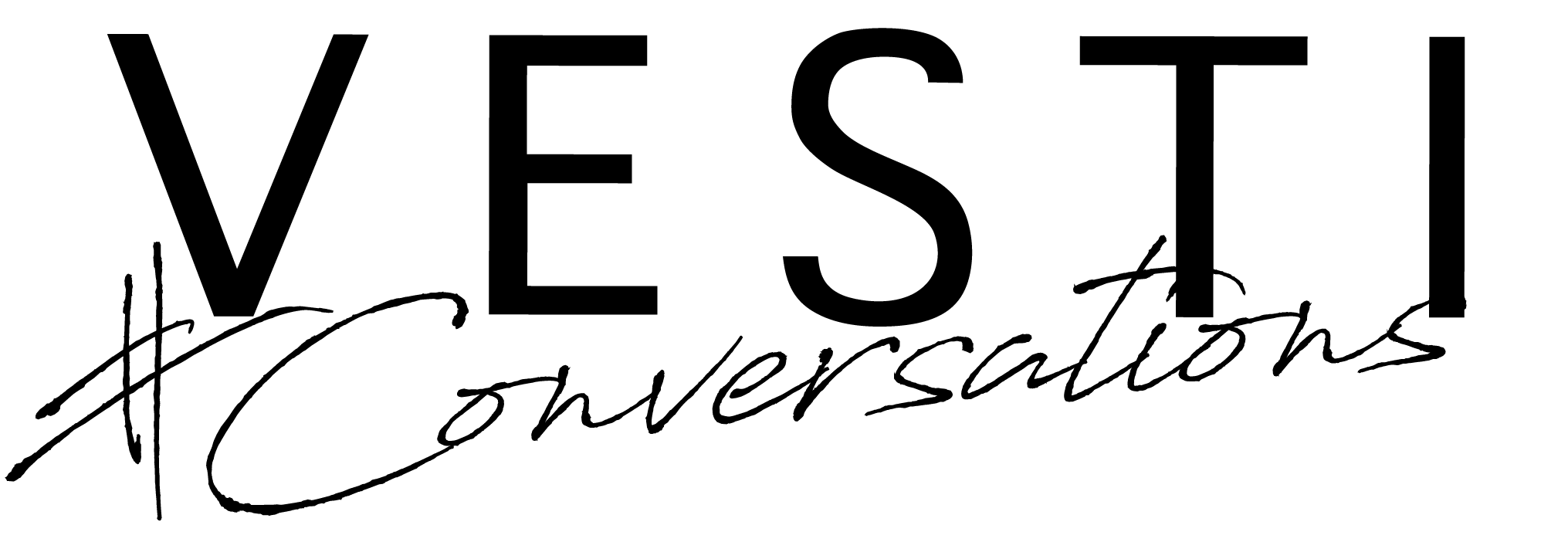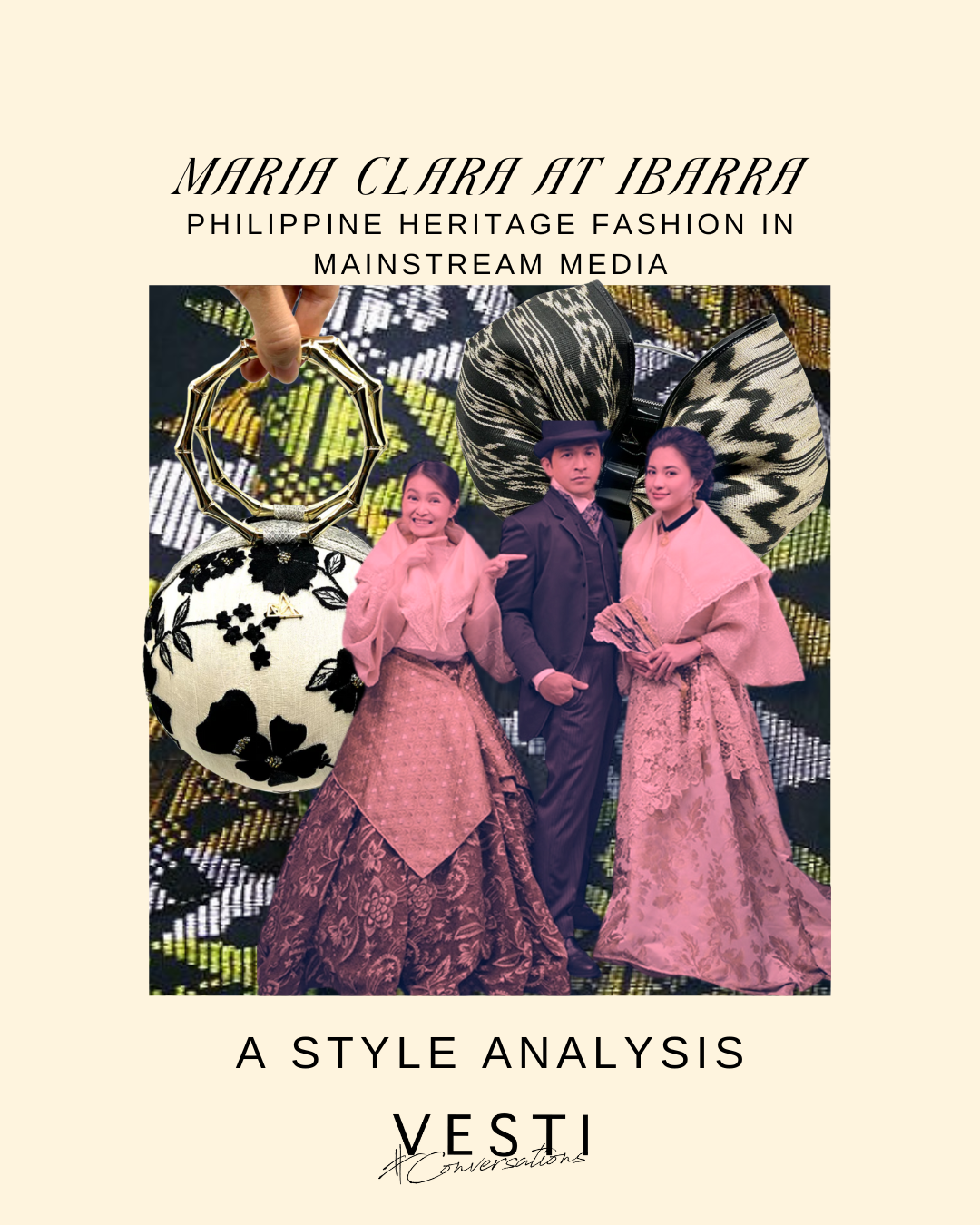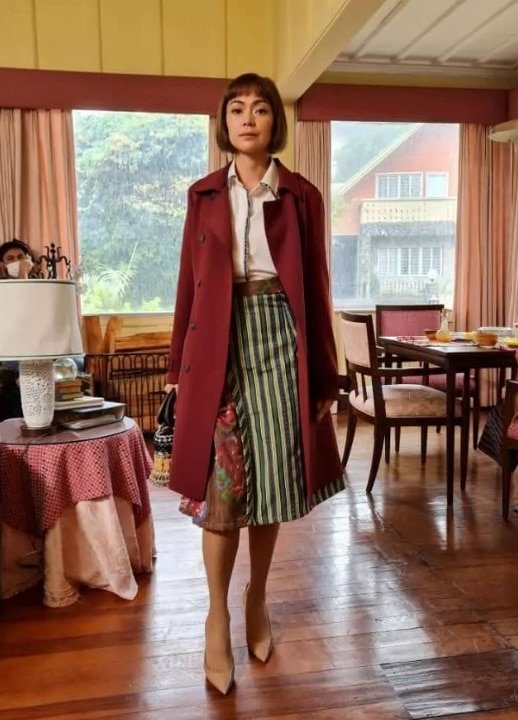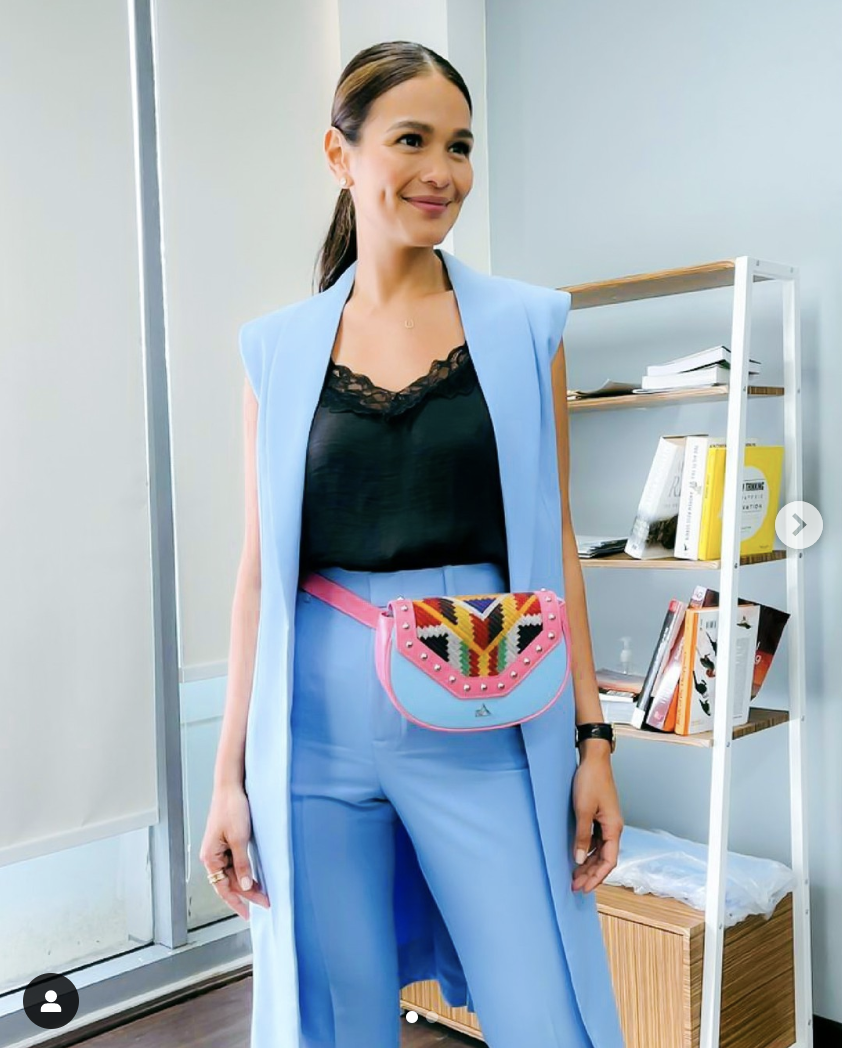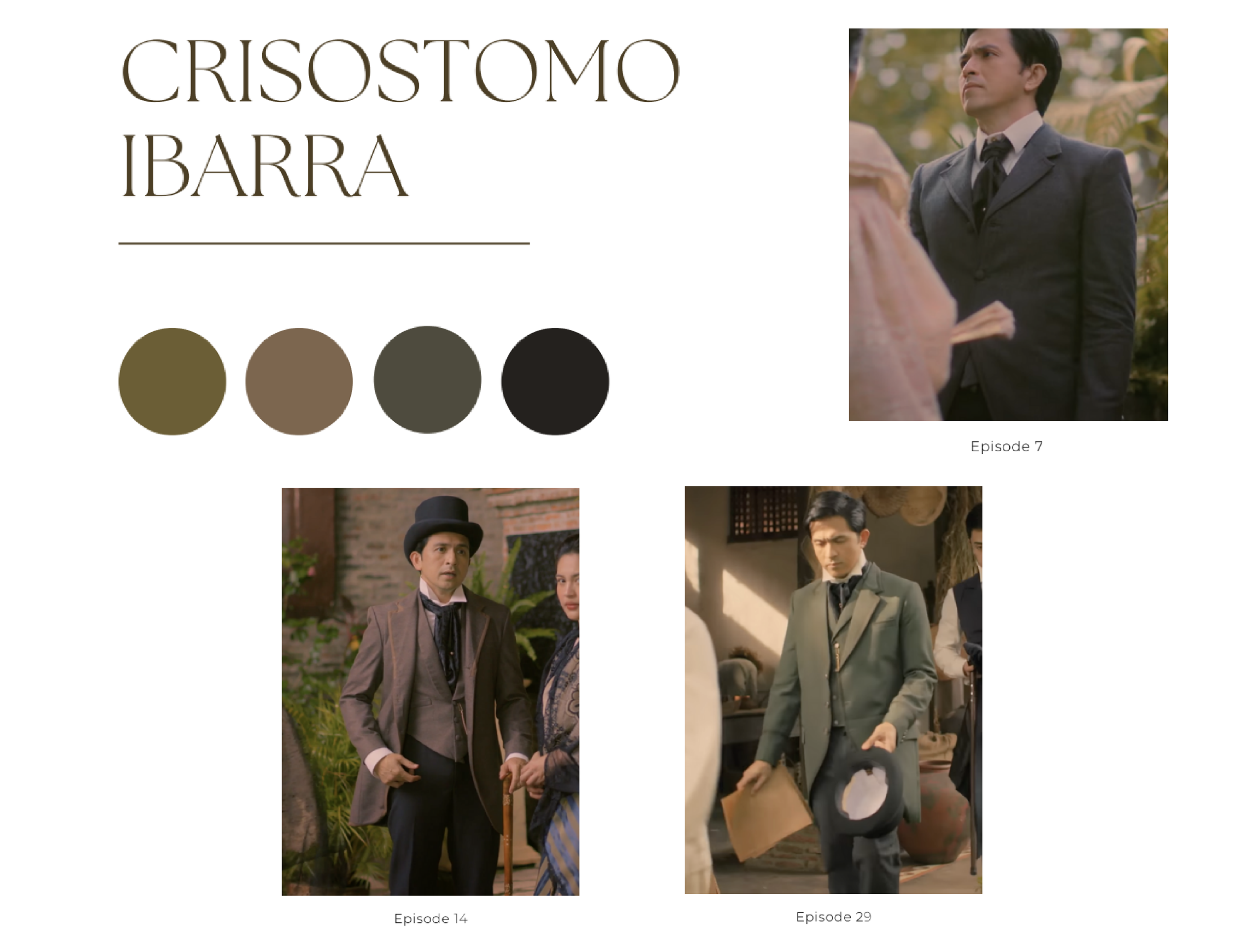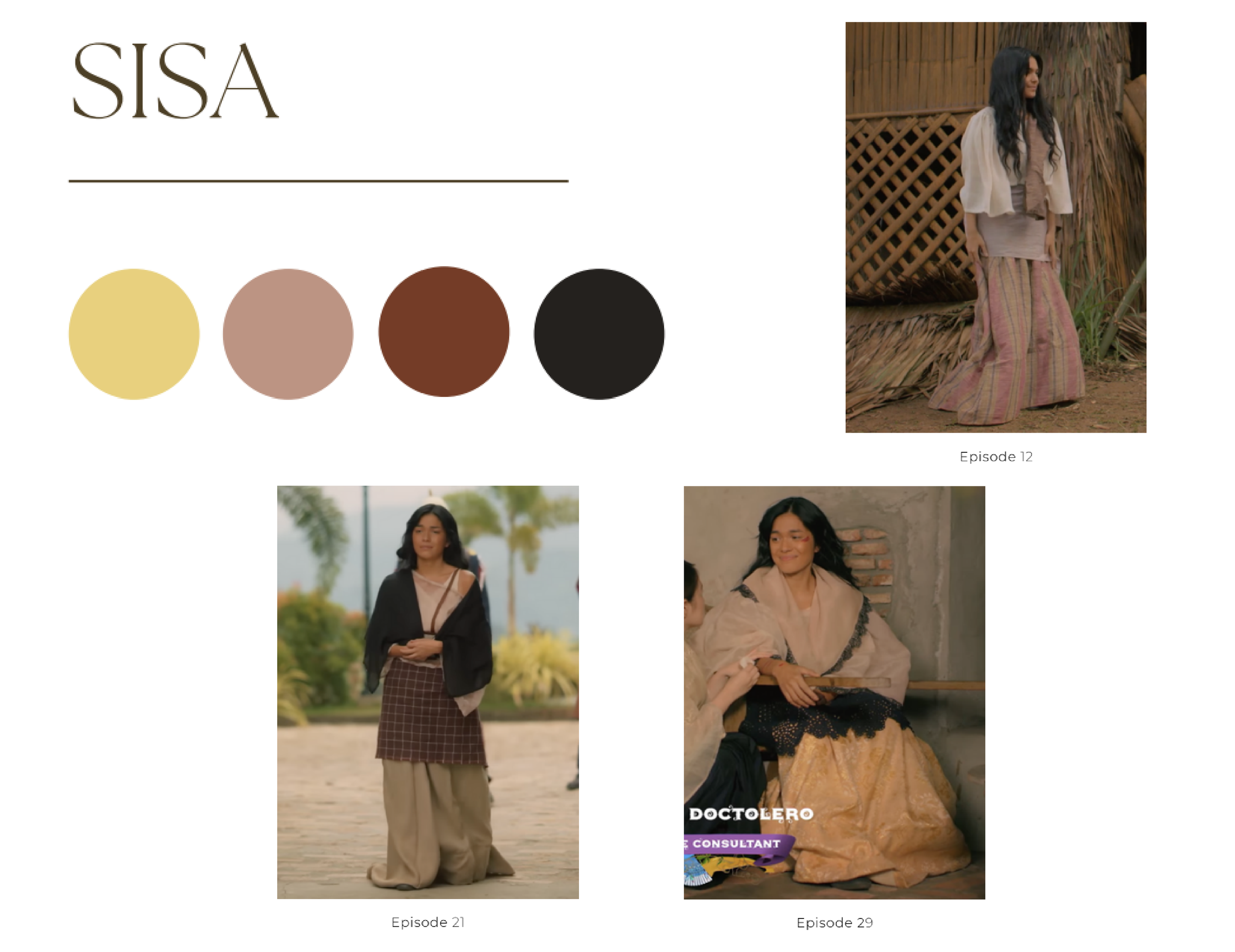Maria Clara at Ibarra : A Style Analysis
by Bithia Reyes
“Matuto Sa Nakaraan”
The opening theme of Maria Clara at Ibarra is not only indicative of the show, but of the revival of Philippine heritage fashion. Subtly, at first, with the spotting of indigenous weaves and Filipino-made ensembles in the show The Broken Marriage Vow, or Iza Calzado on VIU's 'K Love' wearing a VESTI Trunk belt bag, to more potent homages like a DARNA comeback or most recently, a Noli Me Tangere adaptation, we take a look at a renaissance of Philippine heritage fashion in mainstream media.
MARIA CLARA AT IBARRA
Breakfast at Tiffany's Poster
Maria Clara At Ibarra. GMA’s teleserye about a generation z college girl thrown into the world of Noli Me Tangere after complaining about it to her professor is now a hit show showcasing to audiences not only the core ideas, plights, and lessons intended by Dr. Jose Rizal but also the customs, traditions, and fashions of that time - and subvert them.
In 1880s Philippines, we are regaled with a novel concept, a beautiful setting, and equally beautiful costumes. These costumes, like all of fashion in media and entertainment, have the power to influence and inspire. Audrey Hepburn’s black dress from Breakfast at Tiffany’s motivated many a-young girls to wake up at the crack of dawn to recreate that iconic window-shopping scene. While the success of Netflix's “Bridgerton” led to Manila’s very own “Villa Bridgerton” where you can dress up as an 1800s court lady and experience the Ton.
Likewise, Maria Clara & Ibarra have the opportunity to captivate audiences, tell stories and mark the history books with its costume design.
Thus, we’ve cut, sewed, and trimmed this Style Analysis of "Maria Clara at Ibarra"
WARNING: Spoilers ahead! This analysis is based on the then-current releases: episode 1 to 29, teaser/s and promotional materials.
Klay is a modern woman propelled into the novel, “Noli Me Tangere” set in 1880s Philippines. When she first appears in traditional clothing, notably, she's in yellow - a symbol of joy, hope and spontaneity foreshadowing how she'll affect the plot for the better. For most of the show however, she’s dressed in ill-fitting clothing and mature colors (dark blues and browns, harkening back to Ibarra’s mother. The loose clothing forces her to constantly lug her skirt around and roll up her sleeves, denoting her fish-out-of-water status.
“Her silhouette is inspired by the 1860’s since she is mostly wearing hand-me-downs from Ibarra’s mother. The shape of her skirts are much more of a ball shape, which was the trend of the time. Her skirts are also pleated in the style of ‘Siete Cuchillos’ or a skirt with seven panels.” — Janra Raroque, Stylist
The only item of Klay’s are gold studs gifted by her mother during her debut. In the show, it was used to emphasize her strength of character.
Maria Clara was the Zendaya of the 1880s Philippines. i.e. perfection in a traje de mestiza made of brocade, jacquard, or piña with a complete set of jewelry.
“To source for the fabrics, especially the piña, which we utilized on the panuelo and camisa, we went to Lumban, Laguna. These piña panels were then hand embroidered and made into the garments.” — Janra Raroque, Stylist
Throughout the show, she is usually dressed in pastels and light colors except when it’s customary to wear black or she’s feeling negatively. We also see her change into various accessories, with the most notable one being a Victorian cameo choker (episode 4). reason being: she is the only character wearing this, it was mainly worn by young, affluent Filipinas, and it wouldn’t become popular until a few years later. Further emphasizing how Maria Clara is at the top of her social circle.
Ibarra is the protagonist in Noli Me Tangere. After coming back from studying abroad, Ibarra often dons 1880’s European menswear. This being a three-piece suit and tie, with accessories like a bowler or top hat, pocket watch, and a walking stick.
Ibarra is often in darker hues (gray, brown or black) and formal clothing. Appearing to come off as a somber gentleman, yet this image is juxtaposed by the sentimental pin on his cravat and his pocket watch, items h is never seen without, and assumed to be given by his father.
When Sisa first appeared, she wore a classic Baro’t Saya common amongst Filipinas in the lower class. The saya was a faded pink with no embellishments, but the baro was of good material and well taken care of.
“Even though it lacks the embellishments and finer details of the Traje de Mestiza, there is beauty in how the “Indio” women of those times drape the “tapis” and the “Saya” to match their lifestyle, working on the field during the day.” - Janra Raroque, Stylist
During her downfall after losing Basilio and Crispin (episode 21), she is wearing a tattered sheer baro with a black shawl. Black is often worn during mourning, so the usage here could be mourning the loss of her children, or foreshadowing the loss of her sanity; and the baro further serves as a stark contrast to Sisa’s introductory look.
Lastly, during Sisa’s final scene prior to being sent to a mental hospital, she’s in an oversized traje de mestiza with a yellow saya and black trim, presumably from Ibarra’s late mother. The black carries her grief, but the yellow— initially dubbed as Klay’s color— could be emblematic of Klay and company taking care of her now.
True to history, the kids mainly wore faded pastel Camisa de Chinos and trousers.
Fidel and Ibarra are birds of the same feather (both privileged young chaps with hearts of gold), but unlike Ibarra, Fidel has more cynical and dated views. Consequently, they have a similar dress-sense (three-piece suit, tie, cane, etc.) with different color schemes. Fidel’s clothes are usually a lighter shade. They also don’t have the sentimentality Ibarra has, Fidel is without a staple pin or necklace, but makes up for it with swagger.
Maria Clara's trio of friends with sayas in primary colors is a necessary dopamine boost after the stress of the episodes.
One of the most common misconceptions among the youth is that Doña Victorina would wear a traje de mestiza. As the epitome of colonial mentality, her personal style would naturally be the European equivalent: a corset and bustle skirt. Coupled with a vivid orange-red to showcase her domineering personality, this costume couldn't be more perfect.
NEXT WAVE
VESTI Liwayway bag - CLARA, hand embroidered on piña
“I hope we will learn to appreciate the local things that we have because that's our culture.” says Janra Raroque, stylist for the show. “I hope this show will inspire people to embrace that.”
Maria Clara at Ibarra might not be the first historical TV show, but that doesn’t diminish its importance by making history entertaining for the masses, it paves the way to correct major issues like historical revisionism, and allows our culture and heritage to feel more tangible and relevant to today.
A love for our people and our country has always been present— it was there when Lapu-Lapu fought Magellan, there on June 12 1898, and there when we won Ms. Universe.
Maria Clara at Ibarra serves the same purpose, as an outlet to learn about and support our people. Already, the impact of the show can be seen in sold-out books and renewed interest in brands like Filip+Inna & VESTI that champion local communities.
“When you watch this, I think you'll be very interested to find out about history and to do your own research after the show, and to find out what happened back then. How it reflects our times.” — Mikaella Borinaga, Assistant Stylist
Glossary of Terms:
From Fashionable Filipinas
Baro
Camisa, shirt, or dress; the waist-length blouse of the traje de mestiza.
Baro’t Saya
A dress that combines elements from both the precolonial native Filipino and colonial Spanish clothing styles.
Camisa
Waist-length blouse of the traje de mestiza.
Camisa de Chinos
A collarless shirt with a two or three button opening at the front of the neck and sleeves without cuffs.
Panuelo
Starched square neckerchief usually made of sheer material worn over the camisa. It measures approximately 85 to 90 cm (34 to 36 inches).
Saya
A full-length skirt.
Tapis
A decorative rectangular cloth around the waist.
Traje de Mestiza
Also known as the María Clara gown, a dress or outfit of the mestiza; ensemble typically consisting of a baro or camisa, a pañuelo, a saya and an optional tapis or sobrefalda.
